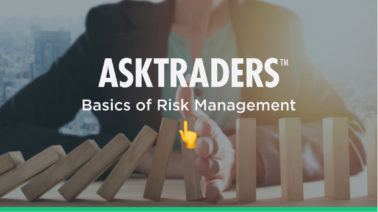Risk Management (10)
A proper risk management approach can help traders to reduce the potential for losses when the market moves in unexpected directions. That’s why we created strategies that can help you protect your investments and limit risk exposure when unexpected things happen in financial markets. Furthermore, we included articles on the psychological approaches to risk, as well as a plethora of practical tricks to manage real-life situations. Cover all the basics, and your trading funds will become much safer in no time.
How to learn financial risk management?
Before you learn about financial risk management, it is good to know what you are getting into. Financial risk management is the practice of employing adequate protection against an individual or a firm’s exposure to risk. These include market risk, credit risk, operational risk and foreign exchange risk.
Since financial modelling is structured around risk management, it is advisable to either take up an online course or a full-fledged degree. Some of the renowned universities and business schools offering courses in risk management include Yale University, NYU Stern University, Harvard University and Oxford University.
What are the keys to understanding financial risk management?
The keys to understanding financial risk management include:
- Recognising an investable asset such as stocks, bonds, currencies, commodities.
- Defining the potential risk to the asset from low-high.
- Testing different risk management approaches.
- Applying suitable risk measure/s that ensures that the downside of the asset is at acceptable levels.
- Monitoring the performance from time to time and make changes if required.
To learn more about financial risk management, you can look-up our beginner’s guide on risks in trading.
What are the risks of trading?
The risks associated with trading can broadly comprise market risk, credit risk, operational risk and foreign exchange risk. While all the risks may not apply to all the asset classes or market segments, it’s good to know what each one of them means. Here’s a quick description
- Market risk – General risk associated with rising/falling prices.
- Credit or counterparty risk – Possibility of one of the parties defaulting on the contract/ agreement.
- Operational risk – Losses that could result from the failure of a firm’s internal processes.
- Inflation risk – Leads to undermining the returns on an investment due to a fall in its purchasing power.
- Foreign exchange risk – A financial risk that could occur if the asset is not in the domestic currency.
What are the 4 strategies for risk management?
Regardless of the financial instrument, trading in the financial markets carries a risk. While there are several risk management strategies to protect traders from adverse price movements, let’s look at the following four:
- Planning investments – Forecast entries/exits to determine the effective profit-loss ratio.
- Risk reduction – Reduce the overall risk to the portfolio by diversifying into multiple sectors, assets.
- Risk acceptance – If the risk is small compared to the cost of mitigating them, accept it.
- Hedging – This strategy helps protect the downside risk of an existing portfolio.
What is the 1% rule in trading?
Investing in any asset class carries a risk, but this trading rule aims to limit the maximum risk per trade to 1% of the account value. For instance, if the size of your trading account is $50,000, the stop-loss per trade should not exceed 1% or $500, notwithstanding the asset class or the market segment (spot, futures, options).
The principle behind the 1% rule is to ensure that you do not have significant exposure to a particular asset that could advance your risk. Besides, if the losses are shallow, you can quickly break even and jump into profits instead of holding on to big loss-making positions. Also, when losses deepen, negative psychology comes into play. The 1% trading rule aims to limit or curtail the negatives associated with trading risks.


















